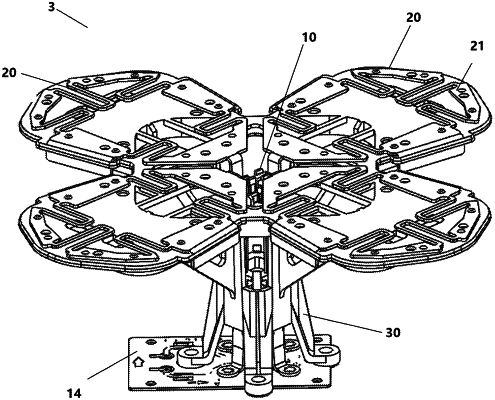| CPC H01Q 1/246 (2013.01) [H01Q 5/307 (2015.01); H01Q 5/42 (2015.01); H01Q 19/108 (2013.01); H01Q 21/26 (2013.01)] | 5 Claims |

|
1. A low frequency band radiating element for a multiple frequency band cellular base station antenna, comprising:
a first dipole arm including a first radiating portion and a first dipole arm coupling portion;
a first dipole leg that includes a first grounding portion that is configured to be grounded, a first leg and a first dipole leg coupling portion located at one end of the first dipole leg;
a second dipole arm that is separate from the first dipole arm, the second dipole arm including a second radiating portion and a second dipole arm coupling portion;
a second dipole leg that includes a second grounding portion that is configured to be grounded, a second leg and a second dipole leg coupling portion located at one end of the second dipole leg; and
a dielectric spacer interposed between the first dipole arm coupling portion and the first dipole leg coupling portion,
wherein the first dipole arm coupling portion is removably connected to the first dipole leg coupling portion,
wherein the second dipole arm coupling portion is removably connected to the second dipole leg coupling portion,
wherein the first dipole arm is a stamped sheet metal dipole arm and the first dipole leg is a stamped sheet metal dipole leg, and
the first dipole leg has a first thickness and the first dipole arm has a second thickness that is less than the first thickness.
|